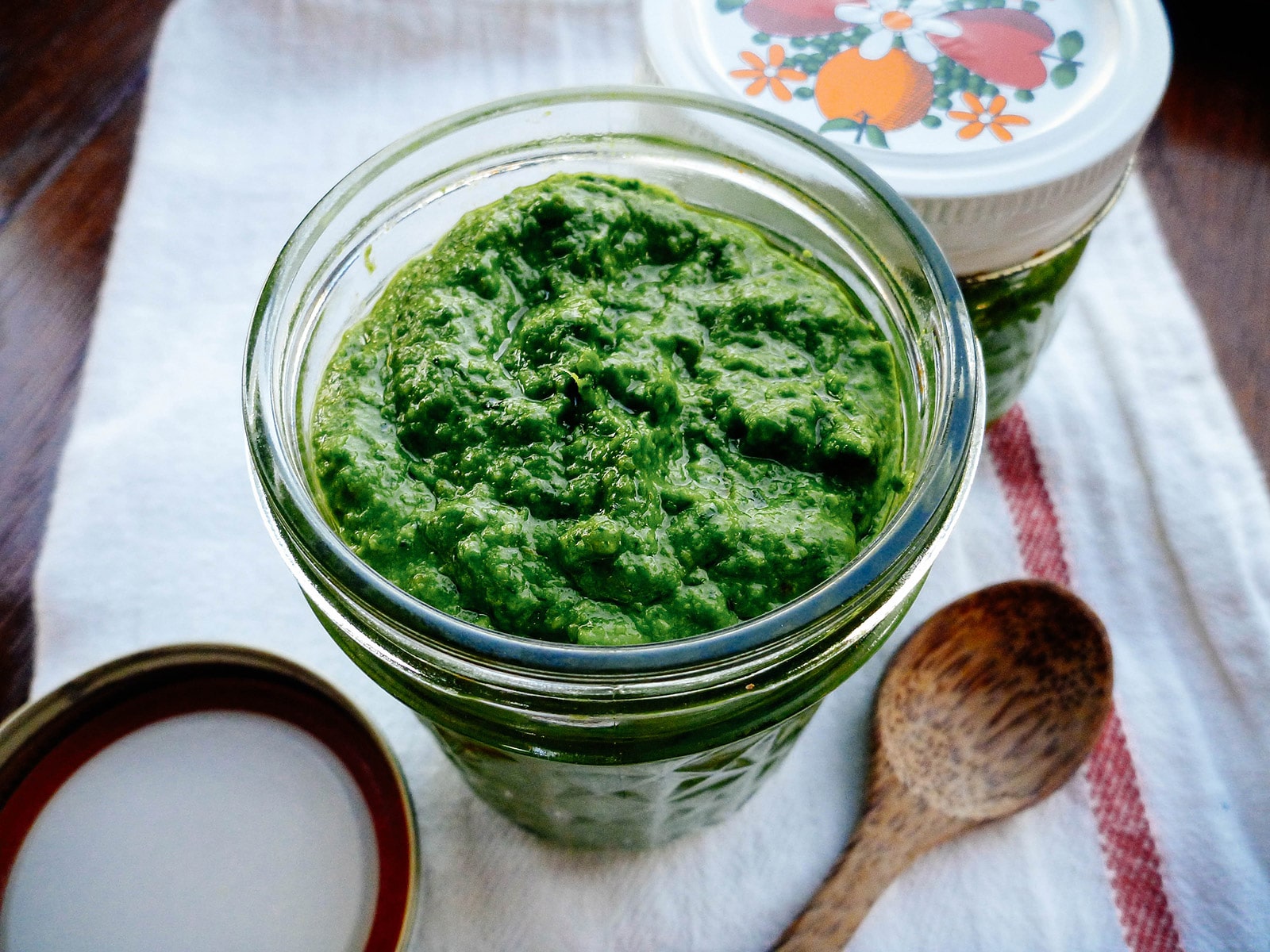After a cool and wet spring, the nasturtiums always come. Fields of nasturtiums—all over my garden, popping up through the mulch, under the stairs, between the cracks, volunteering everywhere.
Read next: Nasturtium Leaves: The Most Waterproof Surface Ever?
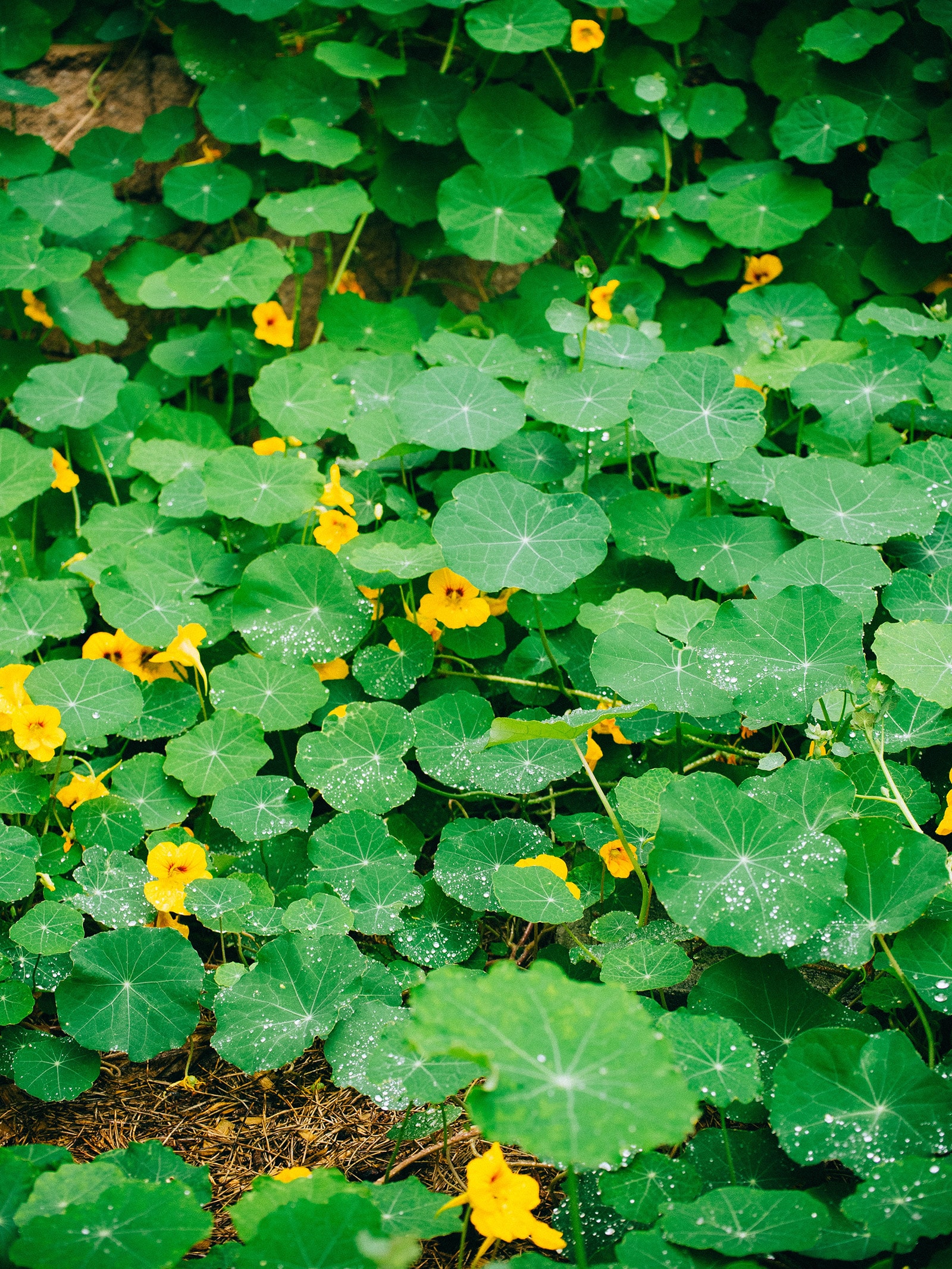
Most people don’t give nasturtiums a second look. They’re sometimes regarded as weeds, as they reseed easily and will grow absolutely anywhere with the least amount of maintenance. They’re often seen as ornamental annuals, blooming through early summer before the heat turns them into a scraggly mess of vines.
Related: Best Edible Ground Covers for Vegetable Gardens
But historically, nasturtiums (Tropaeolum majus) are considered vegetables, hailing from South America and originally cultivated in Peru.
The leaves and flowers contain high amounts of mustard oils, which give them a pungent, peppery flavor and are released when the plant is crushed or chewed. (These are the same oils found in mustard seeds, horseradish root, and wasabi.)
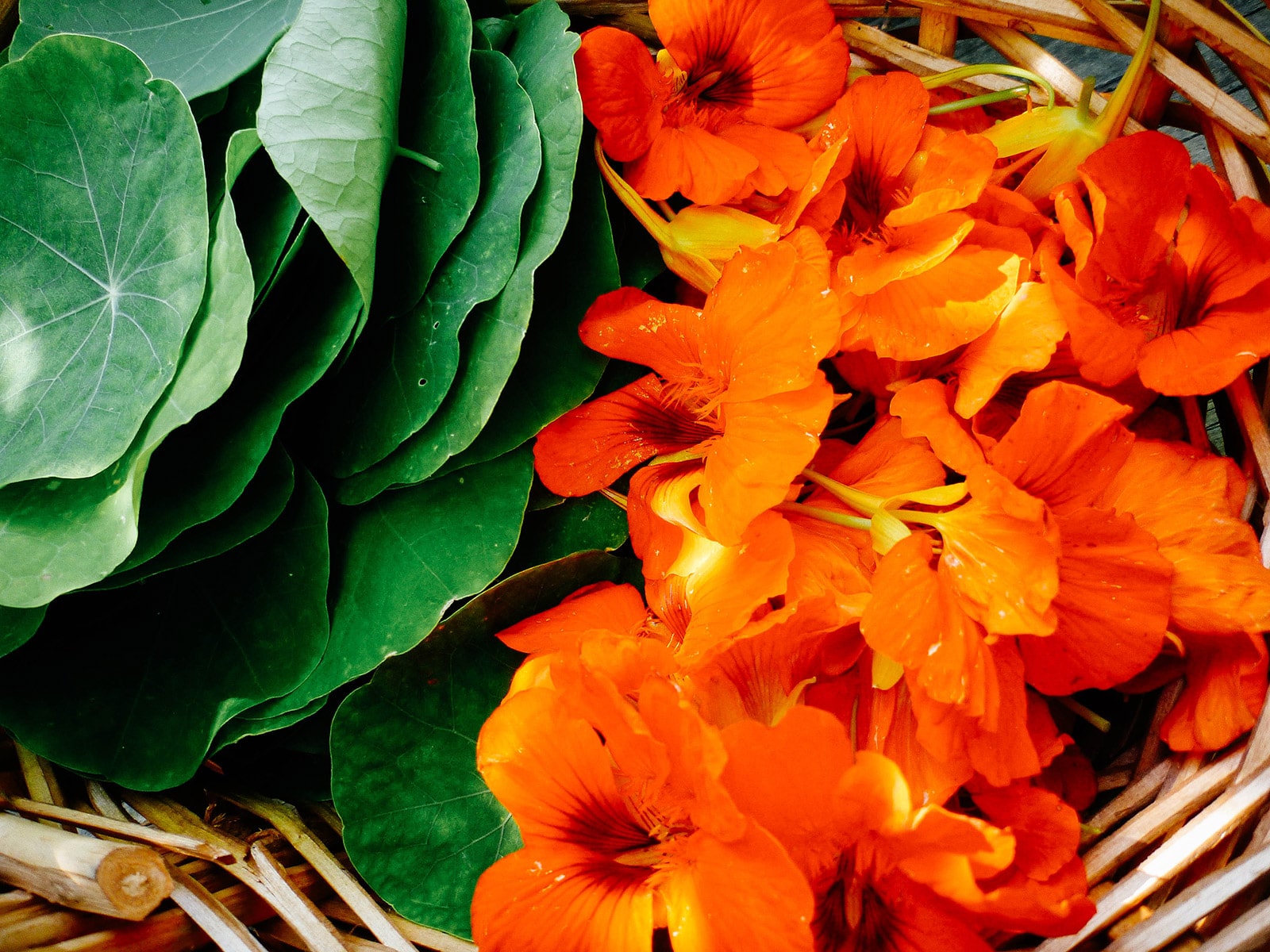
Mustard oils have active antibiotic, antifungal, antiviral, and antibacterial properties, making nasturtiums a natural remedy for everything from skin infections to sinus colds. The leaves are also rich in vitamin C and iron, and anthocyanins in the red and orange flowers make them highly antioxidant.
Read more: Anthocyanin Powerhouse: Pusa Asita Carrots
Just make a simple (yet beautiful) salad with the leaves and flowers to gain the many health benefits of this very underrated plant!
But when I end up with a bumper crop of nasturtiums, my favorite use for them is making pesto. The mustard oils in the plant add a boldness to this recipe that isn’t found in traditional pesto, and it’s such a treat to have homegrown, homemade pesto when it isn’t basil season yet!
So how do you use nasturtium pesto? Almost anywhere you’d normally use basil pesto: spread on a pizza or sandwich, tossed with hot pasta or zucchini noodles (zoodles), smeared onto a piece of toast, or stirred into vegetable soup for a burst of flavor. You can add a dollop of nasturtium pesto onto a steaming baked potato, or thin it out with more olive oil and drizzle it over eggs or roasted vegetables.
Nasturtium pesto may overpower more delicate flavors, so use it sparingly unless you love a little kick!
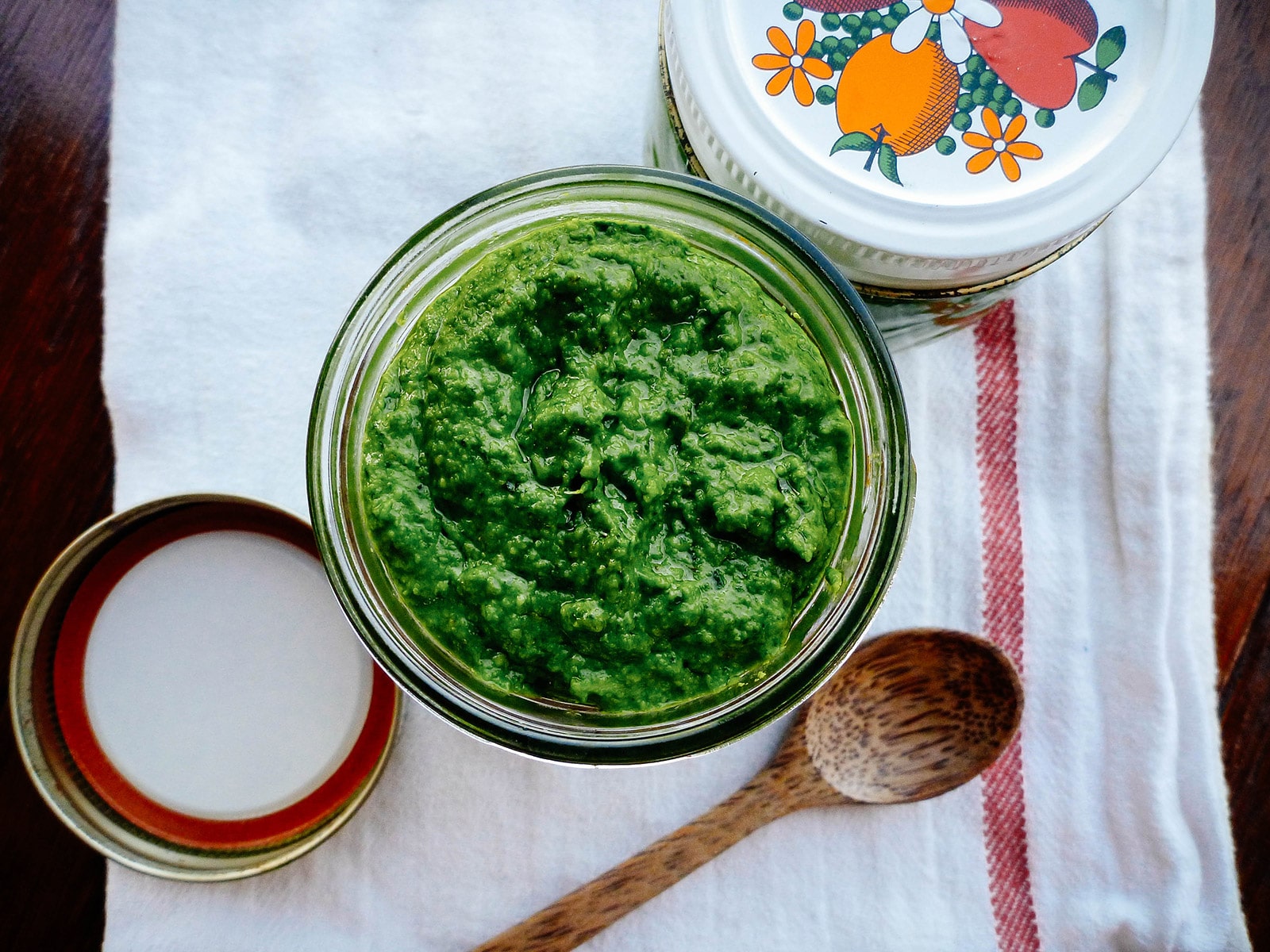
Nasturtium Pesto
Makes 2 cups
Ingredients
4 cups packed nasturtium leaves
2 cups packed nasturtium flowers
1 1/2 cups olive oil
5 cloves garlic
1 to 1 1/2 cups walnuts
1 to 1 1/2 cups shredded Parmesan cheese
Instructions
Pick a basket full of fresh, healthy leaves and flowers without any blemishes. If your plants aren’t blooming yet, using only the leaves is fine too.

Nasturtiums are highly beneficial in the garden for being natural aphid traps, so you’ll want to make sure you’re not harvesting a colony of aphids along with them!
Thoroughly wash and dry the leaves and flowers; tear larger leaves in half.
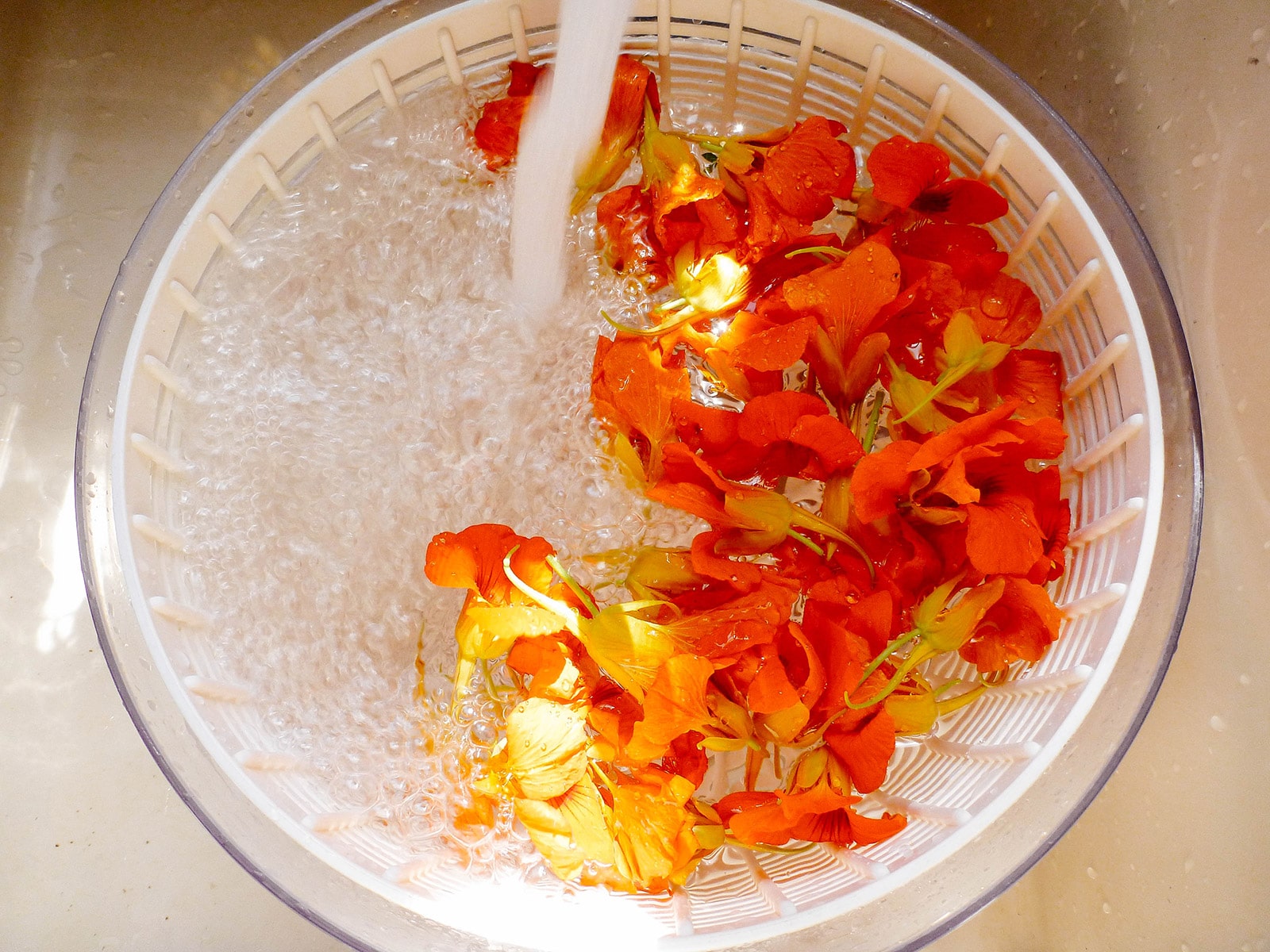

Add the leaves, flowers, garlic, olive oil, walnuts, and Parmesan to a blender or food processor. I like my pesto extra nutty and extra cheesy, so I use the full 1 1/2 cups for each ingredient.

Blend all the ingredients until the mixture is smooth.
Ladle the pesto into small jars, refrigerate, and enjoy! The pesto should keep for up to two weeks.
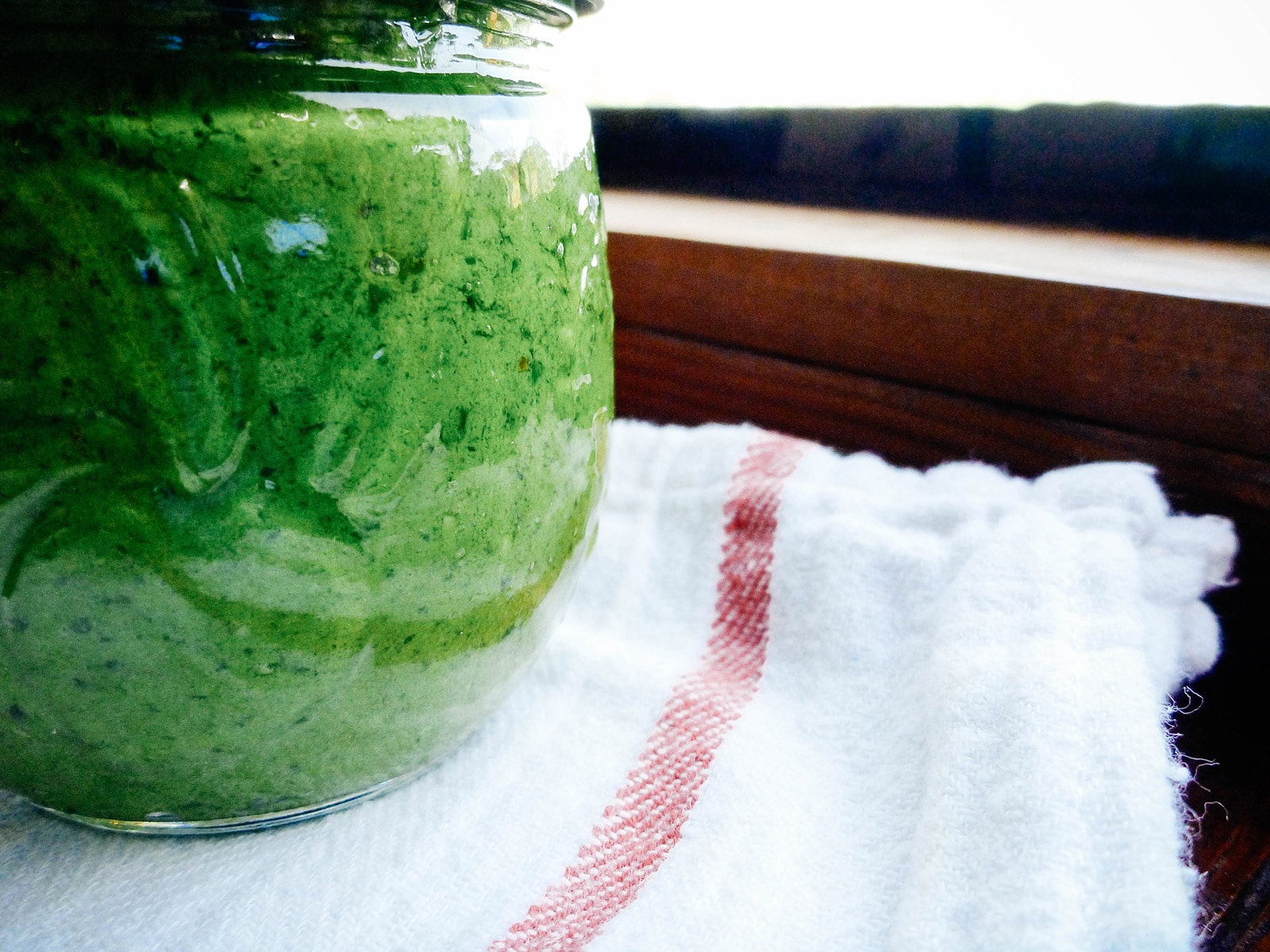
Nasturtium Pesto
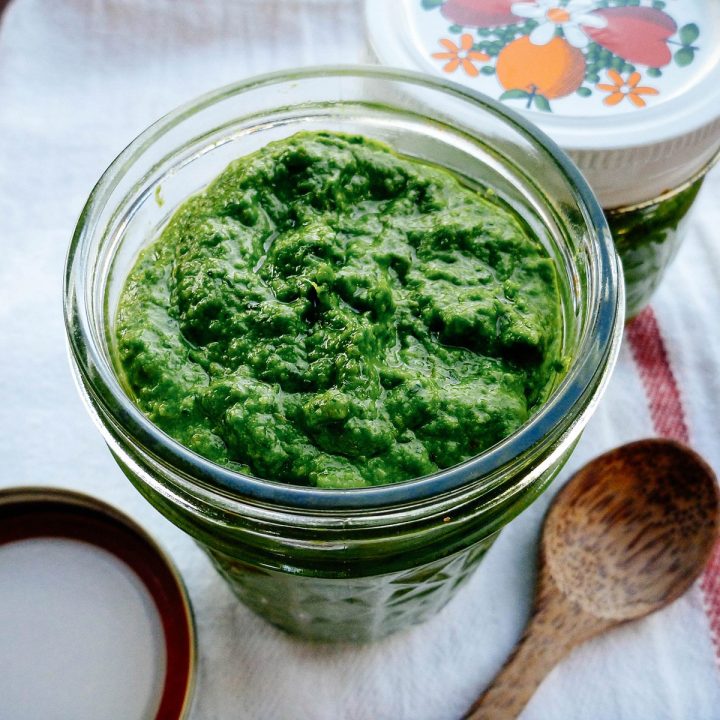
Nasturtiums are often seen as an ornamental flower in the garden, and sometimes even as a weed with how prolific it is, but it's actually a highly nutritious leafy green that can be turned into pesto!
Ingredients
- 4 cups packed nasturtium leaves
- 2 cups packed nasturtium flowers
- 1 1/2 cups olive oil
- 5 cloves garlic
- 1 to 1 1/2 cups walnuts
- 1 to 1 1/2 cups shredded Parmesan cheese
Instructions
- Pick a basket full of fresh, healthy leaves and flowers without any blemishes. If your plants aren’t blooming yet, using only the leaves is fine too.
- Thoroughly wash and dry the leaves and flowers; tear larger leaves in half.
- Add the leaves, flowers, garlic, olive oil, walnuts, and Parmesan to a blender or food processor. I like my pesto extra nutty and extra cheesy, so I use the full 1 1/2 cups for each ingredient.
- Blend all the ingredients until the mixture is smooth.
- Ladle the pesto into small jars, refrigerate, and enjoy! It should keep for up to two weeks.
Notes
Nasturtiums are highly beneficial in the garden for being natural aphid traps, so you’ll want to make sure you’re not harvesting a colony of aphids along with them!
Nutrition Information:
Yield:
32Serving Size:
1 tablespoonAmount Per Serving: Calories: 138Total Fat: 14gSaturated Fat: 2gTrans Fat: 0gUnsaturated Fat: 12gCholesterol: 3mgSodium: 64mgCarbohydrates: 1gFiber: 0gSugar: 0gProtein: 2g
Nutrition information isn’t always accurate.
This post updated from an article that originally appeared on January 15, 2013.


